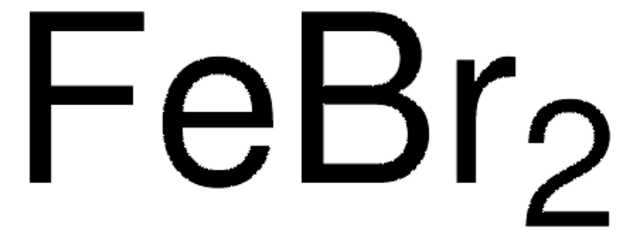449598
Aluminum chloride
anhydrous, powder, 99.99% trace metals basis
Synonym(s):
Aluminium trichloride, Aluminum trichloride, Trichloroaluminum
About This Item
Recommended Products
grade
anhydrous
vapor pressure
1 mmHg ( 100 °C)
Assay
99.99% trace metals basis
form
powder
reaction suitability
reagent type: catalyst
core: aluminum
impurities
≤150.0 ppm Trace Metal Analysis
mp
190 °C (lit.)
solubility
benzene: slightly soluble(lit.)
application(s)
battery manufacturing
SMILES string
Cl[Al](Cl)Cl
InChI
1S/Al.3ClH/h;3*1H/q+3;;;/p-3
InChI key
VSCWAEJMTAWNJL-UHFFFAOYSA-K
Looking for similar products? Visit Product Comparison Guide
General description
Application
- To prepare room temperature ionic liquid electrolyte to fabricate high performance Al-graphene battery.
- As an electrolyte component for aluminum-ion batteries.
- As a precursor to prepare nanocomposite catalyst for electrochemical Friedel-Craft reaction.
Features and Benefits
accessory
Signal Word
Danger
Hazard Statements
Precautionary Statements
Hazard Classifications
Eye Dam. 1 - Skin Corr. 1B
Supplementary Hazards
Storage Class Code
8B - Non-combustible corrosive hazardous materials
WGK
WGK 1
Flash Point(F)
Not applicable
Flash Point(C)
Not applicable
Personal Protective Equipment
Choose from one of the most recent versions:
Already Own This Product?
Find documentation for the products that you have recently purchased in the Document Library.
Customers Also Viewed
Articles
In the last two decades, a new method termed solid-state metathesis (SSM) has been developed to synthesize compounds that are often difficult to produce conventionally.
Our team of scientists has experience in all areas of research including Life Science, Material Science, Chemical Synthesis, Chromatography, Analytical and many others.
Contact Technical Service






